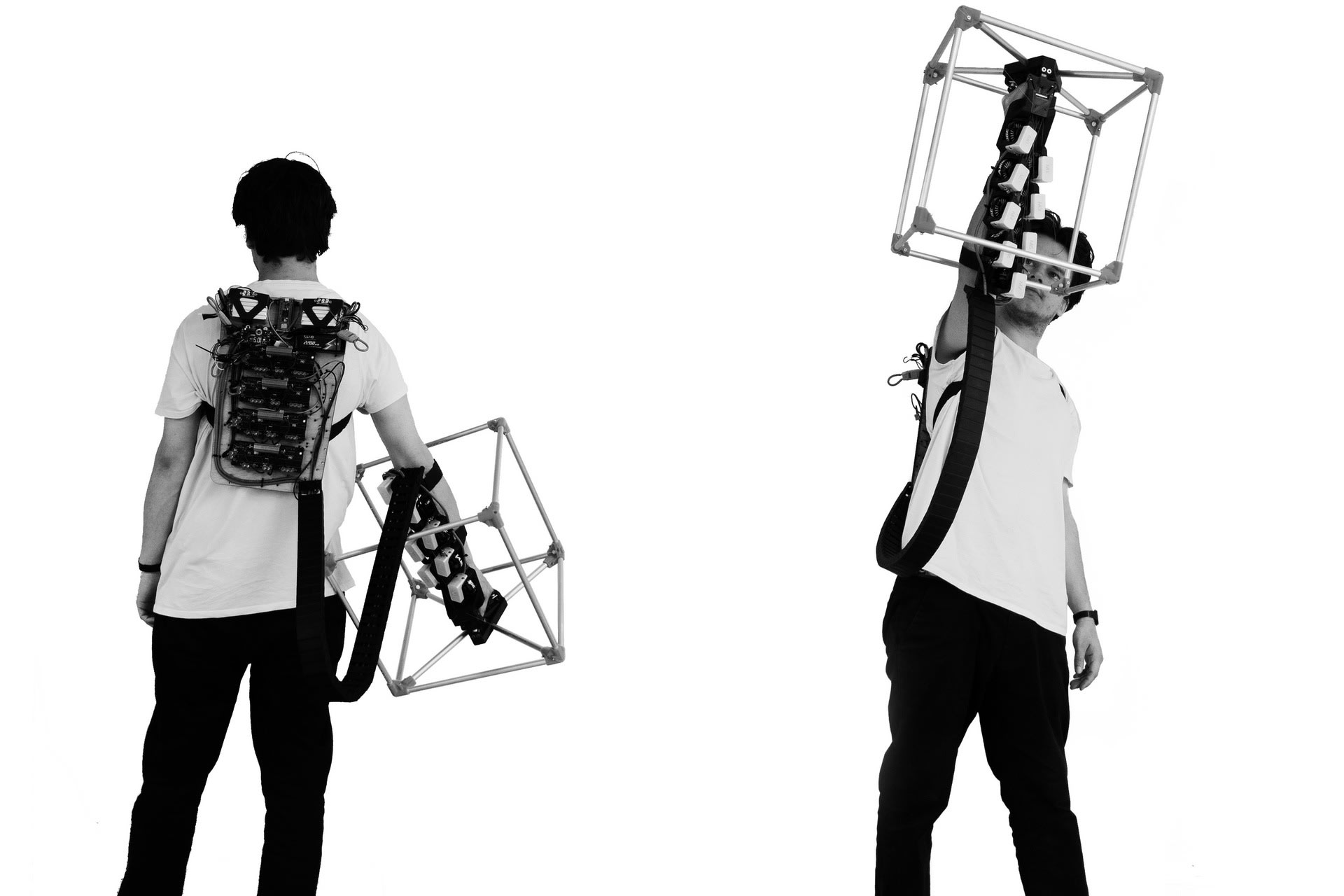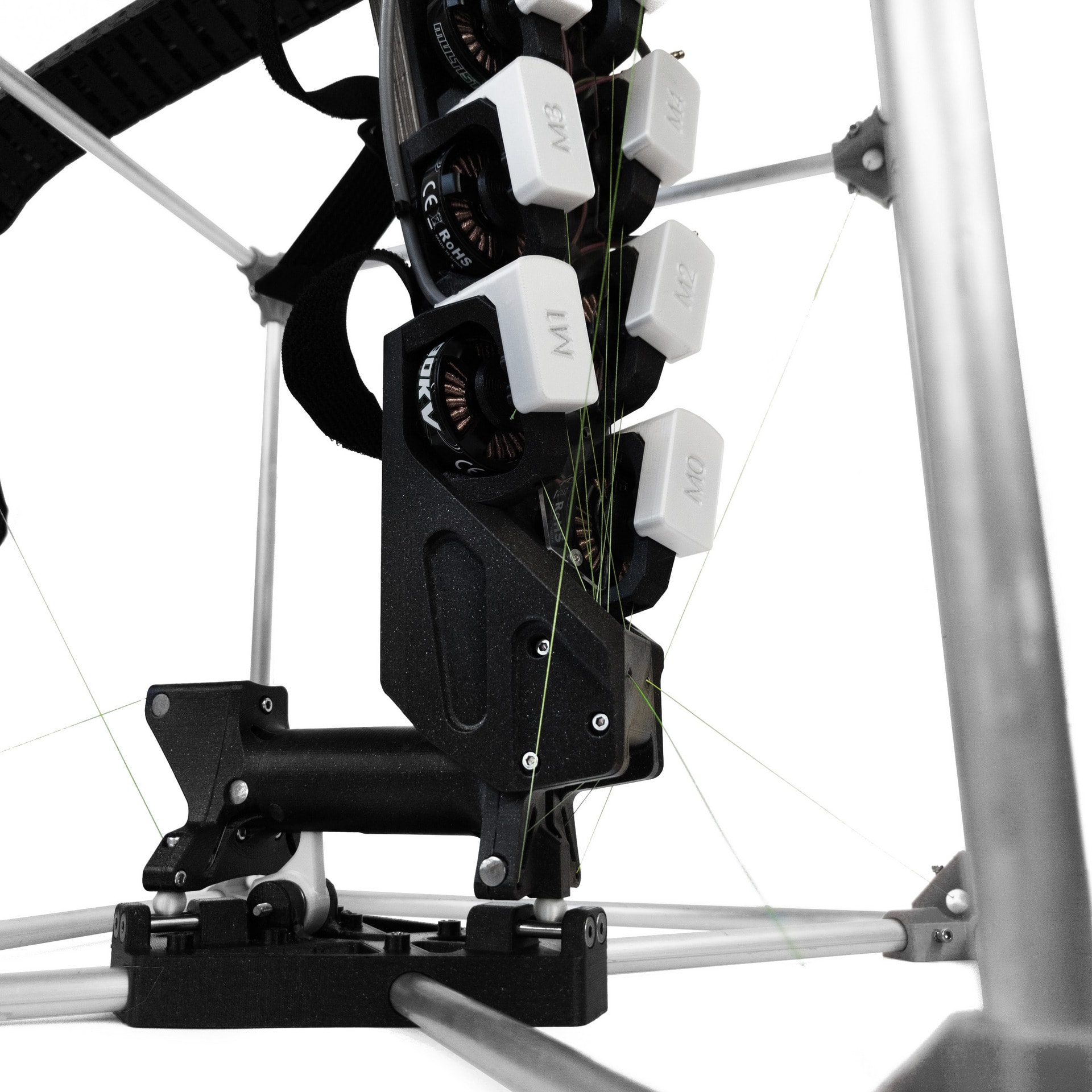Mecha-morphis explores the concept of ‘augmented makers’ – the reimagining of digital fabrication technologies (technologies that control tools through computers) to augment, rather than replace, human making abilities.
Seeking to fuse computer control with human control, I turned myself into a six-axis CNC machine – arguably the most universally capable digital fabrication technology today. A novel cable robot was designed to sit between a human hand and common tools, such as routers, drills or welding torches.
Despite human movement, the six axes of control, when combined with real-time position sensing, can correct both the tool’s position and orientation to achieve superhuman precision. Commands layered on top of this correction can control movements and work from 3D models. As the machine is wearable, it facilitates fabrication at almost any scale, from drilling circuit boards to welding super-structures. However, varying degrees of human influence can be maintained by adjusting the control relinquished to the computer.
From complete human control to complete computer control; across tools, across scales and across data sources – as a platform, Mecha-morphis unlocks richer spectrums of fabrication. By exploring these spectrums, the future augmented maker can discover new ways of working that surpass the existing limitations of both digital and human fabricator.



